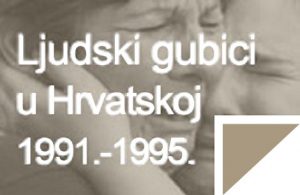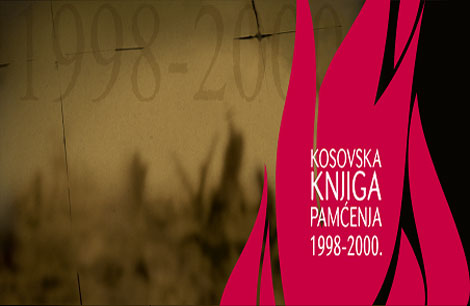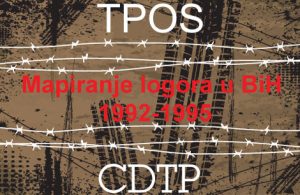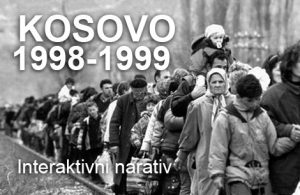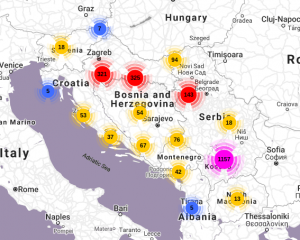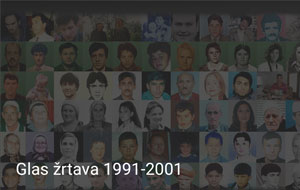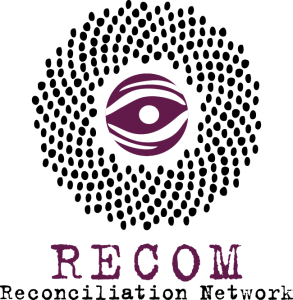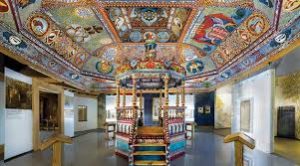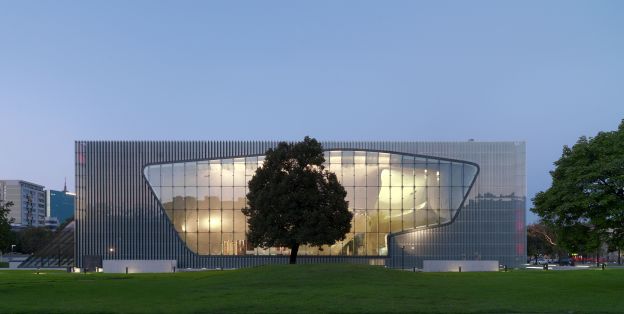
02.11.2015.
On the paths of the Memory and Commemoration of Polish Jews
By Jelena Krstić
Legend has it that Jews came to the Polish forests fleeing persecution in Western Europe in the early Middle Ages. The forests told them to rest and settle there. They did so, and over the next few centuries came to consider Poland one of their homelands.
In present-day Warsaw, there is a museum which displays the history and life of the Jews in Poland since their settlement in the 12th century to the present day. Like other museums which offer visitors sounds, smells, pictures and texts from the past, the Polin Museum draws many visitors to its halls, which hold an extensive collection organized into eight galleries.
I visited the Polin Museum to walk the paths of Polish Jews who perished in this country during World War II. Its collection is displayed in chronological order, so the Holocaust is presented only in the last sections of the exhibition. One has to walk through eight centuries of history before hearing the drone of German bombers and commotion on the streets of Warsaw.
The exhibition begins with the sporadic arrivals of Jewish merchants in the towns of central and eastern Europe, then moves on to the establishment of early Jewish settlements in urban districts, and the organization of local Jewish communities and their everyday and family life. The exhibits and artefacts show the complex relations that the Jewish community had with the clergy and nobility, in contrast with the almost constant protection it enjoyed from the Polish rulers. The exhibition also touches upon the occasional frictions between the Jews and other peoples, and on the sporadic persecutions of Jews, which did not, however, become a regular occurrence until the end of the 18th century. A stunning replica of a wooden synagogue which once stood in Gwozdziec, Ukraine, with its exquisite painted interiors, gives the visitor a splendid insight into the lavish Jewish art of the 18th century.
The exceptionally vivid display of Jewish settlements, customs, private and public life is cut short by a portrayal of the Holocaust.
Unlike some other presentations of the history of the Jewish people,[1] which document the history of the virulent hatred and organized violence against the Jews in Europe, and their repercussions, the Polin Museum presents the Holocaust as something quite unexpected and imposed from without – something that had nothing to do with the Varsovians. The exhibition offers most of the historical facts: the first public harassments of Jews, the formation of the Warsaw Ghetto, the establishment of the Jewish Council in the Ghetto and the remorse of some of its leaders, the hiding and disguises, the hunger, disease, rounding-up and deportation of people to concentration camps, the liquidation of the ghetto. It omits, however, to shed light on the attitudes of the Poles towards the suffering of people who were once their friends and neighbours. Only the presentation of the postwar period succeeds in pointing, rather timidly, by quoting one of the leading Polish historians, Jan Blonski, to the possible responsibility of Poles for the genocide against the local Jews.
In the late 1980s, Blonski published an article entitled, The poor Poles look at the Ghetto, which triggered a debate over whether the Poles shared the responsibility for the Holocaust in Poland during World War II. In this article, Blonski discusses the wartime and postwar discourses in Poland concerning the suffering of Warsaw Jews. Citing several poems by his compatriot and Nobel Prize Winner Czeslaw Milosz, Blonski insists that the fact that the Warsaw Ghetto stood inside the city, that Varsovians strolled along its walls on a daily basis, and that Polish children rode on merry-go-rounds in parks just outside the ghetto, should not be forgotten. The ghetto was in full view, and the genocide was imaginable. That is why, Blonski believes, Poles should have resisted the Nazi agenda to exterminate the Polish Jews, instead, unfortunately, of choosing to condone the Holocaust by their silence. Arguing that a failure to act is tantamount to action, and that one can share responsibility for past wrongdoings even if one did not take part in them, Blonski calls on his fellow Poles to admit their guilt by saying to themselves, the Jews and the world, “Yes, we are guilty”. It would only be through this that the Poles could expiate and purge their society of the burden of guilt for the extermination of people who had lived side by side with them in the same city. As was expected, Blonski’s views and arguments met strong resistance and, as has happened in all other postwar societies, Blonski remained a lone voice, ignored by the majority of citizens.
The Polin Museum core exhibition does, therefore, mentions Blonski in its last section, thus suggesting that there exists a smouldering possibility for a segment of Polish society to look at the history of its relations with Jews with their eyes wide open. Contrary to what I expected, I left the museum without that sickening feeling of indirect complicity in the horrors that a part of humanity was exposed to. What the museum offered me instead was the usual simplistic cliché that puts the blame for wrongdoing on someone else, someone outside the society and the community in which the evil was made possible.
In my search for the idea of universal responsibility for the Holocaust, and moving away from the museum, I visited the city bookshops. The only books in English that I found on this subject were about the Warsaw Uprising. Then I went to the outskirts of the city park, which is where the Warsaw Ghetto once stood. The memory of the ghetto is preserved by a monument and pavement markers indicating what had been the insurmountable wall encircling the ghetto. It was only on that spot that I really got the impression that this city bears witness to the last large-scale pogrom of Jews in Europe. Encouraged by this, I entered the park following the fragments edges of the wall, rummaging for more signs of remembrance. The wall was soon gone and the park became just a well-maintained pathway attracting tourists and residents of the surrounding buildings. So I went back to the ghetto walls, cherishing that impression which had been so hard to find, and decided that my visit to Warsaw’s memory of the extermination of Polish Jews should end there.
The impression one might get that Poland does not remember its Jews is dispelled by the spectacular Polin. This museum sends a message to the Jews that Polish society can again be their home and haven. The trouble is, however, that Polish society in general, like many others, cherishes the memory of Jewish suffering to the degree that it does not disturb the memory of its own suffering. In the end, it would seem that Polish society also does not acknowledge or accept its share of responsibility for wrongdoing.
The fact that the museum opened nearly 70 years after the World War II and that it presents the Holocaust as only one of the stages in the timeline of Jewish history, instead of setting it apart as an anti-civilizational and historically distinctive phenomenon and a logical consequence of the violent treatment of Jews in Europe, might suggest that this memory is not enough to prevent such wrongs in the future.
In this regard, Polish society is suffering the same fate as many other post-conflict societies that are struggling to create and preserve a memory that would be devoid of limitations, ambiguities, biases and denial. How are the exterminated Jews of Belgrade being remembered? We remember them only occasionally, and our memory is partial, even grudging, so much so that even seven decades after their suffering the sites where they were killed are not marked appropriately. What we also need to do is commemorate the victims of the post-Yugoslav armed conflicts, honouring all the victims, ours and the others’ alike, and to convict all the wrongdoers, including ours. But above all, each of us needs to assume responsibility for the wrongdoings that we committed or allowed to be committed. The Polish example can help us realize how important soul-searching is, individual and societal alike, as it is the key step towards overcoming the legacy of the past.
The Author is Outreach Manager at the Humanitarian Law Center
[1] “History of the Jewish People” by Simon Dubnow, for example.
